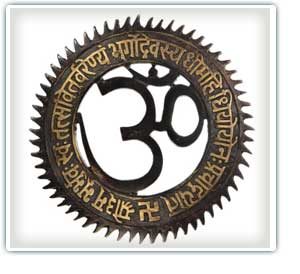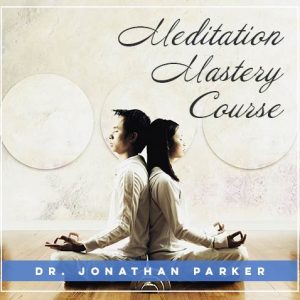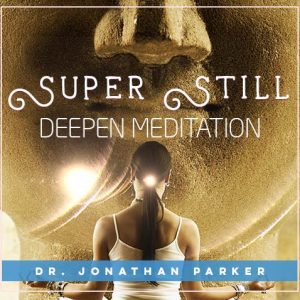
Meditation mantras have been used by practitioners of all major spiritual disciplines for thousands of years, and they are just as vital today as they have ever been for calming the restless “monkey mind” as well as progressing a person along a spiritual path.
Step 1: What is Meditation?
Meditation is generally distinguished from prayer or forms of worship in that it involves techniques that center the mind away from routine outer distractions and habitual thought patterns. Meditation is a form of mental practice that induces a state of consciousness characterized by such traits as peace, joy, contentment, compassion, and an expanded awareness and oneness. When one becomes mindfully focused through meditation a state of relaxed awareness emerges centered in an experience of harmony and unity.
Some of the most ancient meditation practices come from India and are found in Sanskrit texts. In Sanskrit, the word medha means wisdom. The classic yoga texts describe long stages of preparation, breath and mind control, contemplation, and eventually an enlightenment awakening or absorption into oneness. In modern times, simple meditation techniques have been widely used by people to reduce stress, promote relaxation, and foster concentration and focus. One particular meditation technique utilizes mantras for meditation, and in this article I’ll describe how you can incorporate them into your spiritual practice.
For additional guidance on how to meditate see my free article.
Step 2: What is a Mantra?
A mantra is a Sanskrit term meaning revealed sound. It refers to a specific sound or group of sounds whose vibrations attune, energize, stabilize, and focus the mind. In ancient India, these sounds were formed to create sacred associations through the words or vibrations of the sound. These meditation mantras were utilized to awaken deep innate awareness and intuitive powers of the practitioner.
The repetition of meditation mantras is called japa. Often the practitioner would count the repetitions on a bead string of 108 beads called a mala. The mantra has an impact on the meditative state stemming from the vibration of the sound itself and from the collective effect of the repetition of the words on consciousness. The mantra is usually chanted rhythmically aloud or heard silently within.
By surrendering to the meditation mantras and focusing on the sounds, the mind is drawn away from the monkey-mind thoughts that jump back and forth from one thought-branch to another. The mind becomes calmer, quieter, and focused on present moment awareness.
Aside from a mental and emotional impact, meditation mantras also have a healing effect on the physical body. The mantra affects the chakras or subtle energy centers of the body, promoting well being and revitalization. The mantra is a message radiated to the cells of consciousness to vibrate at a more harmonious level.
Step 3: Choosing a Mantra for Meditation
There are many mantras available to choose from. Some mantras are given out only by a teacher or guru since the mantra is completely customized to that individual and always kept private. This is still the method used in the meditation form known as Transcendental Meditation (TM) started by Mahareshi Mahesh Yogi.
There are a number of traditions that have many simple and highly effective mantras that can be selected for use by anyone.
For ease of reading, foreign language mantras will be shown in caps.
VEDIC/HINDU MANTRAS FOR MEDITATION
OM is the root sound of many mantras. OM is sometimes pronounced A-U-M. OM is the sound of creation; the root of all sounds. OM is the audible form of the Universal Absolute, the unchanging, eternal universal supreme God. OM is the primal sound inherent in the life-breath. It is the source, sustenance, and strength of creation. Om is the vital vibration that fills the universe. It is the root of all sounds in all the worlds. It is generally repeated 21 times slowly and deliberately. At the conclusion of the 21 repetitions repeat Shanti (Peace) three times. Amen is a variation of AUM. All Hindu mantras have OM incorporated in them.
When OM is combined with the word NAMAH, it means to honor or praise infinite creation. OM NAMAH SHIVAYA is a mantra honoring the power of Shiva to destroy obstacles. Shivaya is a musical way of referring to Shiva the Consciousness dwelling in everyone and everything responsible for transformation. Shiva’s form consists of sat chit ananda – Existence, Consciousness, and Bliss. Shiva is also sometimes seen as the destroyer; the one who destroys sins and impurities of those who repeat the mantra. “Transformer” would be a more accurate term. It dissolves, brings to an end, eliminates. You could call Shiva the “Terminator.” Shiva is the One who brings an end to all our inner changes. Each syllable has meaning. Namah Shivaya has 5 syllables which are the form of 5 elements. Na = earth; Ma = Water; Shi = fire; Va = air; Ya = ether.
A mantra that Mahatma Gandhi practiced for over sixty years is Om Sri Rama Jaya Rama, Jaya, Jaya Rama. A rough translation is “Om and Victory to Rama (the self within), victory, victory to Rama.” Rama was an Avatar who came several thousand years ago. His life purpose was to show how to live a divine life. This mantra is said to reduce the negative effects of karma while creating a powerful healing experience.
A more general chant also used by Buddhists would be OM SHANTI, SHANTI, SHANTI, invoking the power of peace. Other words that are often used as mantras are Krishna, Rama, Baba (Sanskrit for Father), Amma, Brahman.
BUDDHIST MANTRAS FOR MEDITATION
Buddhist mantras came into use in the Mahayana tradition. The symbolic figures of the Buddhist pantheon represented aspects of the enlightened mind. By chanting a name, the practitioner would draw in that quality of mind. One mantra centered around the legendary figure of Avolokiteshvara: OM MANI PADME HUM. The word Buddha, which means awakened one, can also be used as a mantra.
JEWISH & CHRISTIAN MANTRAS FOR MEDITATION
Christian mantras are closely associated with prayer and often focus on Biblical words and passages involving the name or qualities of God. Here are some examples: Glory to God in the Highest; The Kingdom of God is Within; I am that I am; The Peace of God Watches Over Me. Other words can include various names of God such as, Jehovah, Abba (Aramaic for Father), Adonai (Lord, God), Yahweh (The Eternal Lord God), Alleluia or Hallelujah (Praise Yahweh), El Shadday (All Powerful God who Heaps Blessings).
ELOHIM (The highest Creators. A powerful mantra). Shalom (Peace)
YHWH (Yod Hay, Vod Hay. Divine Father aspect of God.)
Kadoish, Kadoish, Kadoish, Adonai Tzebayoth (Holy, Holy, Holy is the Lord God of Hosts.)
The process of repeating a name of God is called remembrance and it invokes the divine presence of God, love, and light to wash away obstacles and bring healing and unity.
SUFI MANTRAS FOR MEDITATION
Allah (The One God). Astaghfir allahu al-azhim (I ask God for Forgiveness).
La ilaha il-allah (There is no God but the One God)
How to use Meditation Mantra
A very simple technique is the meditation mantra SO’HAM. It translates to mean, “I am that.” It is easy because it is linked directly to observation of the breath. After sitting comfortably and upright, one would focus first on the inhale. Focus on the breath coming from the navel or heart to the throat on the sound SO. On the exhale sound of HAM, the breath is released back down to the navel or heart. This creates a pattern that energizes the body and calms the mind and breathing. In the space between the breath is the pause where the mind enters stillness.
For more on meditation see my audio meditation mastery program.


